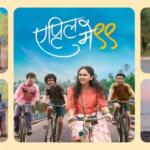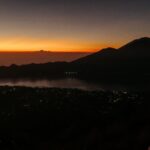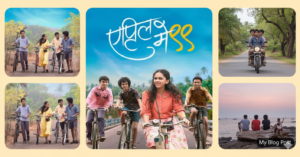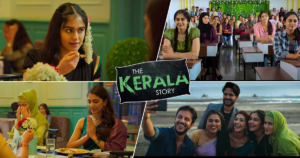In a moment of national pride and historical reverence, UNESCO has officially recognized 12 Maratha forts in Maharashtra as World Heritage Sites under the theme “Maratha Forts UNESCO”. These forts, built and commanded by Chhatrapati Shivaji Maharaj, stand as powerful symbols of Maratha Empire valor, architectural brilliance, and strategic mastery.
The inclusion of these fortresses under the Maratha Forts UNESCO banner is more than an accolade—it’s a global salute to India’s enduring cultural legacy and the unwavering spirit of Hindavi Swarajya.
The Soul of the Maratha Empire – Forts That Breathed Power
To understand the essence of the Maratha Empire, one must look beyond the battlefield and into the mountains. Forts were not just defense structures—they were living organisms of strategy, vision, and leadership. Under the leadership of Chhatrapati Shivaji Maharaj, these forts became hubs of governance, military excellence, and self-rule.
The Maratha Forts UNESCO list reflects this indomitable spirit. Each fort carries with it the story of sacrifice, foresight, and Maratha brilliance.
The 12 Forts That Made History | Maratha Forts UNESCO List
Which 12 Maratha forts are nominated for UNESCO?
Here’s a look at the 12 Maratha forts that have earned their rightful place on the UNESCO stage:
- Raigad Fort – The Capital of the Maratha Empire
Where Chhatrapati Shivaji Maharaj was crowned, Raigad became the political and emotional heart of the Maratha kingdom. Its strategic hilltop location and enduring structure make it a crown jewel of the Maratha Forts UNESCO recognition.
- Rajgad Fort – The First Capital
Before Raigad, it was Rajgad that served as Shivaji’s headquarters. With its vast area, secret pathways, and unique design, it was an impregnable fort that played a key role in Maratha Army movements.
- Torna Fort – The Beginning of Swarajya
Captured by Shivaji at the young age of 16, this fort marks the birth of the Maratha Empire. Its presence in the Maratha Forts UNESCO list is symbolic of the beginning of freedom for the Marathas.
- Sinhagad Fort – Tanaji’s Bravery
This fort near Pune witnessed the legendary battle of Tanaji Malusare. The story of how he scaled the cliffs and fought valiantly is etched into every stone.
- Shivneri Fort – The Birthplace of a Legend
It is here that Chhatrapati Shivaji Maharaj was born. The fort today is a preserved historic site that connects modern India with its most revered warrior king.
- Lohagad Fort – Engineering & Elevation
This Maratha Fort near Lonavala showcases how natural topography and fortification merged seamlessly. With its “Vinchu Kata” (Scorpion tail) design, it’s a marvel of defense engineering.
- Salher Fort – Victory Against the Mughals
The highest fort in Maharashtra, Salher was the site of a crucial victory of the Maratha Army over the Mughals. It represents Maratha military resilience and command over terrain.
- Mulher Fort – The Lesser-Known Guardian
Near Salher, this fort was key in holding off northern invasions. Though not as famous, its contribution earned it a spot in the Maratha Forts UNESCO inclusion.
- Alibag Fort (Kulaba Fort) – Coastal Defense at Its Best
Built to safeguard the Konkan coastline, this coastal sea fort could only be accessed during low tide. A genius stroke in Maratha naval strategy.
- Sindhudurg Fort – The Sea Fortress of Power
Constructed by Shivaji himself on an island, this fort is a true reflection of Maratha fortification excellence. It still houses a temple dedicated to Shivaji Maharaj.
- Kasa Fort (Padmadurg) – Twin of Sindhudurg
Another sea fort, built as part of the Maratha naval defense strategy. Its presence in the Maratha Forts UNESCO heritage list confirms the Maratha mastery over both land and sea.
- Pratapgad Fort – Where Shivaji Fought Afzal Khan
Site of the famous battle with Afzal Khan, Pratapgad is a monument of tactical brilliance and royal courage.
Maratha Forts UNESCO Recognition: A Global Tribute
The Maratha Forts UNESCO inclusion brings these ancient structures under international attention. But more than the stone walls and gates, it is the values these forts represent that matter: resilience, independence, courage, and justice.
Even Gingee Fort, located in present-day Tamil Nadu and captured by the Maratha Army, reflects how far-reaching the influence of the Maratha Empire was, though not part of the 12 selected.
These forts were not just shelters; they were nerve centers of governance, planning, and resistance. They withstood attacks, natural calamities, and centuries of wear, yet they still stand tall.
Cultural Pride for Maharashtra and India
For Maharashtra, this moment is historic. The forts are woven into Marathi identity. Festivals, folklore, films, and education all reflect stories of Chhatrapati Shivaji Maharaj and his mighty forts.
Thanks to the Maratha Forts UNESCO recognition, these once-regional treasures now shine on the global map. The world now sees what The Hindu community and Maratha pride have known for centuries: these forts are eternal.
A Call to Every History Lover and Traveler
Now that the world acknowledges their importance, it’s time for us to experience them firsthand. Visit Raigad and feel the spirit of a coronation. Climb Torna and relive the beginning of Swarajya. Stand on Pratapgad and sense the pulse of battle.
These Maratha Forts UNESCO sites are not just heritage—they are living classrooms, teaching us leadership, sacrifice, and the art of strategic thinking.
What’s Next? Preserving and Promoting the Legacy
With the UNESCO label comes responsibility. It is now up to the government, locals, and travelers to ensure these sites are maintained, respected, and celebrated. Awareness campaigns, eco-tourism, historical trails, and guided tours must become the norm.
Let us make sure future generations know who Chhatrapati Shivaji Maharaj was—not just as a king, but as a visionary, whose forts were the physical manifestation of Maratha freedom.
A Moment of Pride
The Maratha Forts UNESCO recognition isn’t just about the past—it’s about how we shape the future. With the global spotlight on Maratha culture, we have the opportunity to tell the world about bravery, vision, and resilience rooted in stone.
Jai Shivaji! Jai Maharashtra!
Hi, I’m Rupesh Bidkar – a passionate blogger, seasoned traveler, and lifelong curious enthusiast. With a solid background in SEO and digital marketing, I blend storytelling with strategy to craft content that not only informs but inspires. Whether I’m hiking the remote trails of Ladakh, capturing the vibrant spirit of Indian festivals, or diving deep into the latest AI tools and trends, I thrive on exploring the unknown and sharing my discoveries. Through my blog, I aim to connect people with meaningful experiences—be it through poetry, travel guides, tech insights, or cultural reflections. Every post is a piece of my journey—and I invite you to explore it with me.









Pingback: UNESCO World Heritage Sites in India | Story of Global Heritage